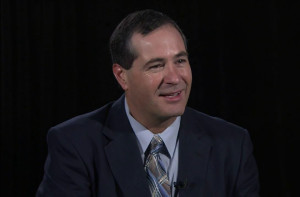

Recently, I sat down with Doug Goehring, who I often argue is the state’s most powerful elected official. During our conversation, at the North Dakota Petroleum Council’s Annual Meeting, Goehring had just dealt with a new increasing and accelerated federal issue – analyzing and implementing executive orders.
“You hit the word, accelerated,” Goehring said. “It’s like everything is being accelerated with all these executive orders just piling into all these agencies.”
After a short pause, Goehring entered into hypothetical land and painted out a high percentage scenario that people could see.
“Not trying to speculate too much here,” Goehring said. “But it all seems to be focused around how they can control and manage the resource they don’t own.”
According to Goehring, these new executive orders impact agriculture, lumber, timber, mining and the development of oil and gas minerals. Goehring then illustrated how one of the executive orders could impact the average person more and more.
“It’s like a small gas station, corner gas station, are now being required to have the same regulatory requirements as a massive oil refinery,” Goehring said. “The first thing is, why? And here’s the thing with OSHA, you have to be a little concerned and care about is public safety. Is worker safety. When you look at this, there is no discernible benefits to enhance public safety.”
Goehring continued saying it was a “paper exercise” and pointed out the preliminary financial impact studies are not even in the same ballpark yet.
“OSHA came out and said it will cost companies $2,167 to become compliant,” Goehring said. “We did some estimates with industry and what they came back with was anywhere between $8,000 to $12,000 to maybe $18,000. Nationally they said $18-$30,000. Last Friday we got a call from a company who said they just received a bid for $77,000 to become compliant on each facility we have.”
Goehring said phone calls like that are becoming too common these days as companies are realizing the true cost of becoming compliant with the federal government. Small staffs, satellite locations and other variables contribute to industry’s argument against the increased executive orders. He then pointed out the timing on all this coincided with the explosion at the West Texas fertilizer facility.
“They cited that anhydrous ammonia was on the facility, but the facility qualified under a retail exemption, because it sells directly to farmers,” Goehring said. “OSHA stated in their report that they believe it could have been avoided if they would not have had this exemption. But the reality is it had nothing to do with anhydrous ammonia, it was ammonia nitrate.”
He added the new regulations do not even address ammonia nitrate which Goehring believes is the main culprit in the accident. Big picture, Goehring sees this as another power play by the federal government to control more of agriculture and energy.
“They keep bringing up issues about water quality and clean air, which all ties back to manufacturing affecting agriculture, oil and gas,” Goehring said.
“If we stick the Constitution we should be able to manage, operate and regulate our own states,” Goehring.
I then pointed out another state’s right debate currently in the news – cannabis. North Dakota passed a law in 1999 allowing the farming of hemp which has a number of manufacturing, energy and agriculture uses.
“That law was passed in 1999 and all we want to do is sell to the biggest customer in the world market, the Unites States government,” Goehring said. “Out of the 400,000 acres grown globally, 220,000 of those acres are consumed by the Unites States.”
Circling back to the Constitution and state’s rights, Goehring pointed out the number of lawsuits against the federal government as indication North Dakota is doing their part to keep the federal government at bay.
“I think that’s why we are in court and are going to continue to be in court,” Goehring said.
Transitioning to technology and the increasing industry in the state, I asked Goehring if he sees technology as the state’s top industry in five years. Although Goehring doesn’t know if technology will be the number one industry in five years, he does see this new wireless world as a way to bridge industries and ideas together.
“It will be quite a feather in our cap if we can utilize this technology, build on it, grow on it, and really develop it here because here is where we are going to refine it,” Goehring said. “We are going to figure out how to use it.”
After discussing how the agriculture industry has been using this new technology of wireless sensors and unmanned aircrafts for monitoring livestock and crops, Goehring described how the emerging technology industry will assist oil and gas development in the Bakken oil fields.
“When you start looking at what we can do in the energy side, monitoring pipelines, checking for erosion, checking vegetation,” Goehring said. “This equipment is so sensitive that you can see a depression in the soil four inches.”
In addition to precise visuals, the eagle eye would still be available to sweep large swaths of land checking on well sites and other areas of high security.
You can identify if someone is in an area they shouldn’t be in. And a great way to monitor for leaks,” Goehring said. “It’s just amazing what we can do and what can be done,”


Leave a Reply